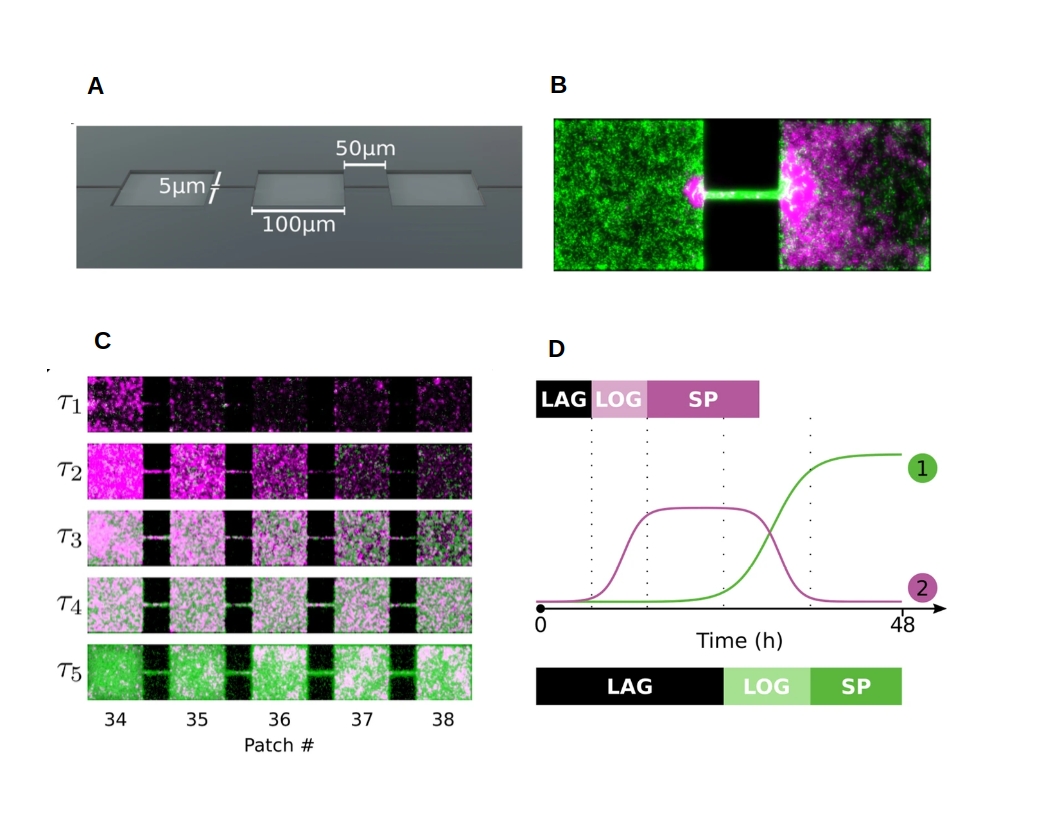Competition–colonization Trade-off on:
[Wikipedia]
[Google]
[Amazon]
 In
In
 In
In ecology
Ecology () is the natural science of the relationships among living organisms and their Natural environment, environment. Ecology considers organisms at the individual, population, community (ecology), community, ecosystem, and biosphere lev ...
, the competition–colonization trade-off is a stabilizing mechanism that has been proposed to explain species diversity
Species diversity is the number of different species that are represented in a given community (a dataset). The effective number of species refers to the number of equally abundant species needed to obtain the same mean proportional species abundan ...
in some biological systems, especially those that are not in equilibrium. In which case some species are particularly good at colonizing and others have well-established survival abilities.
The concept of the competition-colonization trade-off was originally proposed by Levins and Culver, the model indicated that two species could coexist if one had impeccable competition skill and the other was excellent at colonizing. The model indicates that there is typically a trade-off, in which a species is typically better at either competing or colonizing. A later model, labelled The Lottery Model was also proposed, in which interspecific competition is accounted for within the population.
Mathematical models
Levins and Culver model
: : Where: fraction of patches that are occupied by species ; colonization rate of species ; mortality rate of species (independent of patch density). Species 1 = competitor, can colonize in area that is uninhabited ''or'' inhabited by species 2 . Species 2 = colonizer, can only colonize in uninhabited areas . Species 2 is subject to displacement by its competitor . If species 2 has a higher colonization rate it can coexist with species 1: . This model is described as the displacement competition model, it has been observed in marine mollusks and fungi. This model makes two large assumptions: 1. "a propagule of a superior competitor takes over a patch from an adult of the inferior competitor". 2. The adult must be displaced fast enough to ensure that it does not reproduce while it is being displaced.Lottery model
: : Colonization rate is now described by interspecific competition. and . Both f and g > 0. An increase in p1 is related to a decrease in the colonization rate of species 2. g < f implies a competitive advantage of species 1 and c2 > c1 implies a colonization advantage for species 2.In plants
The competition-colonization trade-off theory has primarily been used to examine and describe the dispersal-linked traits of a plant's seeds. Seed size is a primary feature that relates to a species ability to colonize or compete within a given population, the effect of seed size was displayed in dicotyledonous annual plants. Turnbull and colleagues indicated that the competition/colonization trade-off has a stabilizing effect on the population of plants.In algae
For example, in a classic study on anintertidal zone
The intertidal zone or foreshore is the area above water level at low tide and underwater at high tide; in other words, it is the part of the littoral zone within the tidal range. This area can include several types of habitats with various ...
in Southern California
Southern California (commonly shortened to SoCal) is a geographic and Cultural area, cultural List of regions of California, region that generally comprises the southern portion of the U.S. state of California. Its densely populated coastal reg ...
, it was shown that when a boulder was overturned, it would quickly be colonized by green algae
The green algae (: green alga) are a group of chlorophyll-containing autotrophic eukaryotes consisting of the phylum Prasinodermophyta and its unnamed sister group that contains the Chlorophyta and Charophyta/ Streptophyta. The land plants ...
and barnacle
Barnacles are arthropods of the subclass (taxonomy), subclass Cirripedia in the subphylum Crustacean, Crustacea. They are related to crabs and lobsters, with similar Nauplius (larva), nauplius larvae. Barnacles are exclusively marine invertebra ...
s (which were better colonizers). However, if left undisturbed, the boulders would eventually be overtaken by red algae
Red algae, or Rhodophyta (, ; ), make up one of the oldest groups of eukaryotic algae. The Rhodophyta comprises one of the largest Phylum, phyla of algae, containing over 7,000 recognized species within over 900 Genus, genera amidst ongoing taxon ...
(which was the stronger competitor in the long term).
In bacteria
It has been shown experimentally that in a two-species artificialmetacommunity
An ecological metacommunity is a set of interacting communities which are linked by the dispersal of multiple, potentially interacting species. The term is derived from the field of community ecology, which is primarily concerned with patterns of ...
of motile strains ''on-chip,'' bacteria ''Escherichia coli'' is a fugitive species, whereas ''Pseudomonas aeruginosa'' is a slower colonizer but superior competitor. The pattern of ecological succession
Ecological succession is the process of how species compositions change in an Community (ecology), ecological community over time.
The two main categories of ecological succession are primary succession and secondary succession. Primary successi ...
driving dynamics of the metacommunity in a patchy habitat landscape is as follows: Starting with a pristine one-dimensional (array) archipelago of island habitats (patches) which is inoculated with ''E. coli'' and ''P. aeruginosa'' from opposite ends; locally ''E. coli'' colonizes first and later ''P. aeruginosa'' takes over while at the landscape scale ''E. coli'' persists as a fugitive species scrambling
Scrambling is a mountaineering term for ascending steep terrain using one's hands to assist in holds and balance.''New Oxford American Dictionary''. It can be described as being between hiking and climbing, rock climbing. "A scramble" is a relat ...
for patches.
See also
* Intermediate disturbance hypothesisReferences
{{DEFAULTSORT:Competition-colonization trade-off Community ecology Ecological theories Theoretical ecology